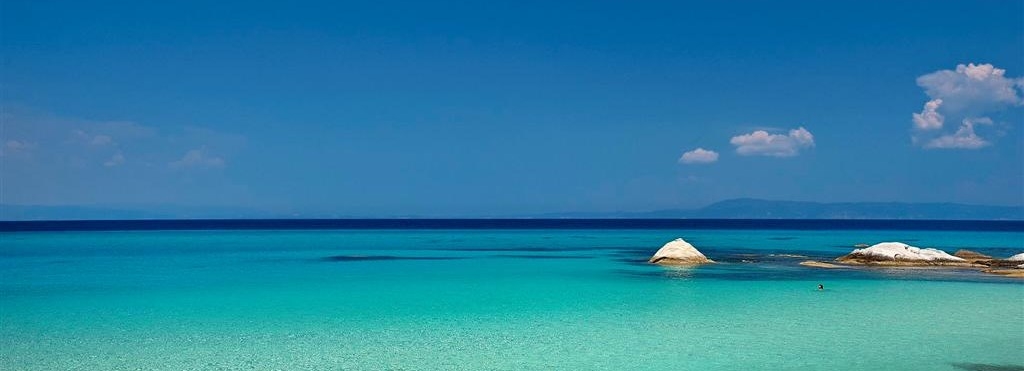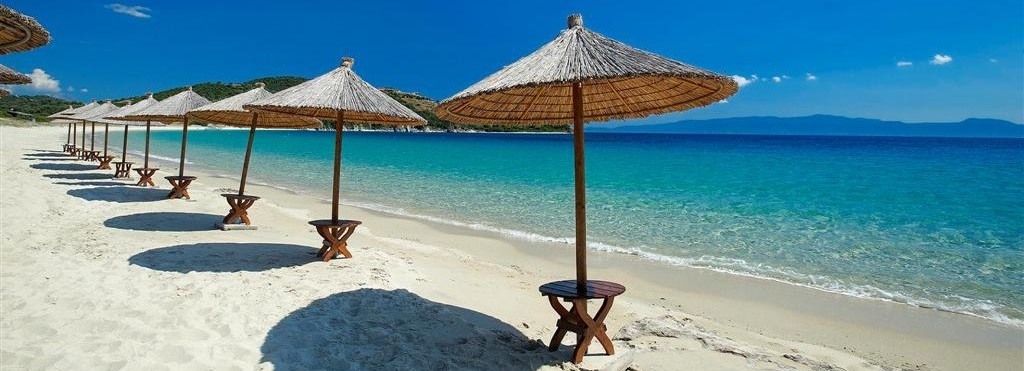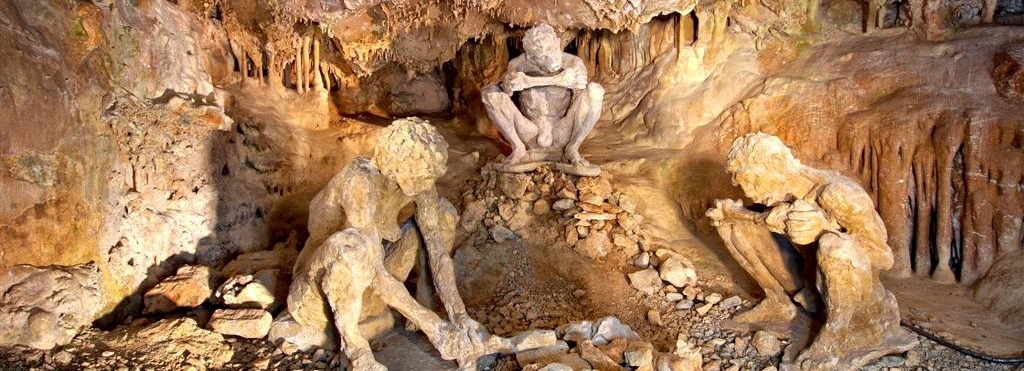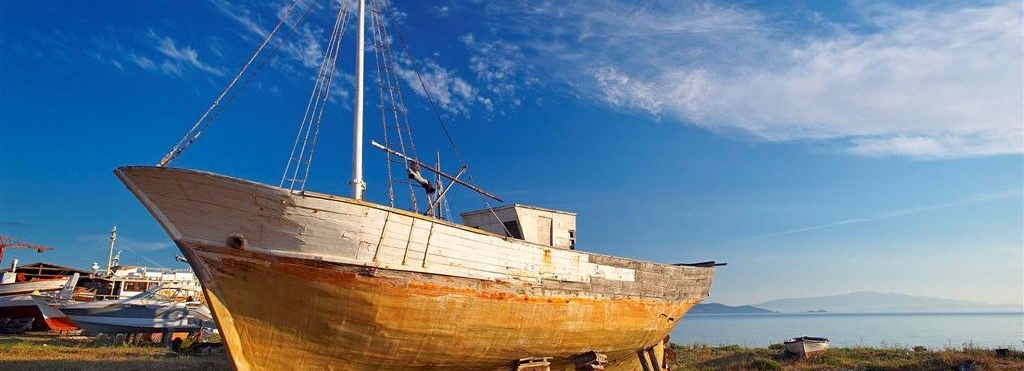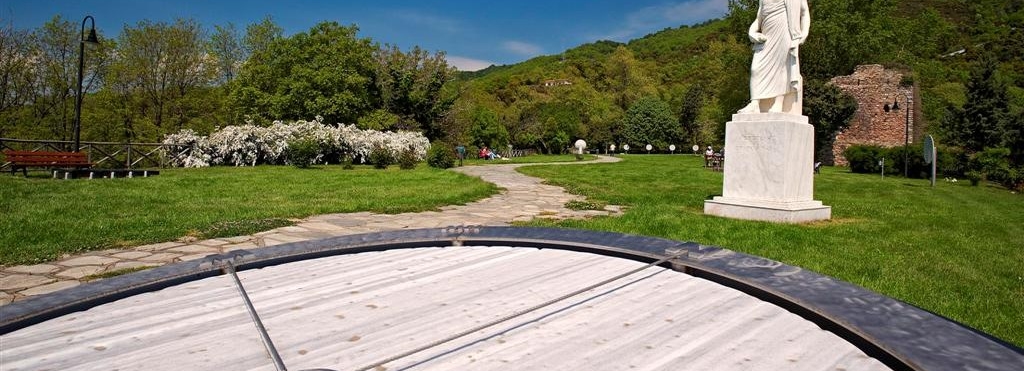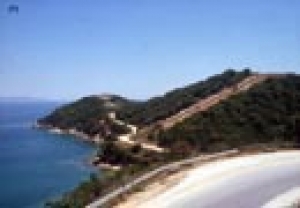Super User
Ancient Olynthus
Olynthus was an ancient city in Halkidiki, built on a fertile plain at the head of Torone’s Gulf, near the neck of the peninsula of Pallene (today Kassandra), at a distance of 60 stadia (approx. 11.5 km) from Potidaea and 4km from the sea.
History
The area was first settled in the Neolithic Age (5300-4500 BC) and the word “Olynthus” is pre-Hellenic and most possibly means “wild fig”. Tradition has it that it was thus named by Olynthus, one of the sons of the river deity Strymon. Herodotus mentions that the city was colonized by Boetiaeans from Imathia in the seventh century BC.
The area belonged to a Thracian tribe, the Bottiaeans, who ruled it until 479BC, when Persian General Artabazus suspected that they were plotting a revolt against the Great King. Artabazus massacred the people and delivered the city empty to the Chalcidice living nearby. As a member of the Delian League, Olynthus must have been fairly insignificant, since it is cited that its contribution was only 2 Talents, while the neighboring cities of Scione, Mende and Torone contributed 9, 8 and 6 Talents correspondingly.
In 432 it becomes the seat and head of the Chalkidian League, a synoecism encouraged and led by Perdiccas, king of Macedon, which resulted in the coming of several Chalkidaeans moving to the city from neighboring settlements. During the same year it detaches itself completely from the Delian League. It was Brasidas’ base of operations for the 424 campaign. It amasses considerable political strength during the 4th century BC, being the head of the Chalkidian League. Testimonies about this League may be traced back to the time of Nicias (421BC), where we find the members of the League embarking in joint diplomatic efforts while they were also among the members of the Argos alliance. Coins of the League have been found, which were positively dated to 405BC. It, thus, is beyond doubt that the League was established before the end of the 5th century and the motive for its establishment was self-protection against a potential attack by Athens.
After the end of the Peloponnesian War the League developed rapidly. Around 390BC we find the people of Chalkidae entering an important agreement with the King of Macedonia Amyntas III and until 382 many Greek cities west of River Strymonas joined the Chalkidian League, amongst which Pella.
It was in that year (382BC) that Sparta finally gave in to Akanthos and Apollonia’s pleas, which feared that they would be taken over of the Chalkidaeans, and embarked on a campaign against Olynthus. After a futile war that lasted for three years, the Chalkidaeans agreed to disband the League (379). This disbandment was formal, since only two years later with find the League amongst the members of the Athenian Naval League (378-7). Twenty two years later, in the reign of King Philipp in Macedonia, Demosthenes presents Olynthus more mighty than before Sparta’s campaign. The city, it is general acknowledged, was a first class one and the League numbered 32 cities in total.
In the year that finally erupted between Athens and its allies, in 357-55, Olynthus originally sided with Philipp. Later, the Chalkidaeans fearing Philipp’s increase of power, joined forces with Athens but, despite the latter’s efforts, especially by Demosthenes, the city surrendered to Philipp in 348, who destroyed it.
Archaeological information
The classical era city was built according to the Hippodameian System of Town Planning, on an area 600X300 meters with building blocks separated by horizontal and vertical streets. Noteworthy is also the fact that the theatre of the city has not been unearthed. Houses were developed over two floors with an internal atrium. To the south was the market and to the east the homes of the wealthy. Among the villas unearthed were those of Kind Luck, the Actor as well as the Twin Eros. Mosaic floors, vessels, jewelry and clay idols were discovered in them. The first archaeological finding saw the light of day in 1928. The most recent excavations were undertaken in the 90s.
Archaeological Museum of Olynthus
The Archaeological Museum is open on the archaeological site of ancient Olynthus since 1998. The museum aims to illustrate the history of the ancient city and also describe the excavations and the restoration process, purely with multimedia.
Monastery Dependency Of Flogita
The Monastery Dependency of Flogita dates back to 1311. Until 1924 it operated as a monastery dependency of the Russian monastery, later as annex of the American Red Cross which attended to the refugees of Kalamaria, while during the Nazi Occupation (1944) it was bombed by the Bulgarian conquerors. In the middle of the 1960s a major fire destroyed the building which was dilapidated. In 1999 the City Council of Moudania decided to grant the area to the 10th Ephorate for Byzantine Antiquities in order for the latter to undertake the necessary restoration works and for the building to be utilized as the Center for Byzantine Culture in Halkidiki, “Justinian”, as it was named by the team of archaeologists responsible for the works. The building will house the museum of the monastery dependency. The project is financed by the EU and national resources and its budget is 10 millions Euro.
Aristotle
Aristotle was born in Stageira in 384BC. His father was Nicomachus, personal physician to king Amyntas II of Macedon. His mother was Phaestis. His parents died when Aristotle was very young and Proxenos, a relative living in Atarnea, a city in Mysia, took him in his custody. When Aristotle turned 18, he left Stageira for Athens, where he studied in Plato’s Academy for 20 years, until, that is, the death of Plato in 347BC. Just prior to this Aristotle had founded a school at Assos in Troas, as a chapter of the Academy. It was then that he married Pythias from Atarneas. He stayed in Troas for three years and then crossed to the island of Lesvos, where he befriended Theophrastus, whom he later left as successor at the school of Athena. He stayed in Lesvos for two more years, namely until 343BC, when he was invited to Pella by king Philip II, to become the tutor to the king’s son, Alexander. Alexander’s education lasted for three years, until 340BC. Aristotle then retired to Stageira, where he married again, this time to Herpyllis, also from Stageira. He returned to Athens in 335BC and founded his own school, the Lyceum, later renamed to Peripatos. He directed this school for 12 years and it is in this interval that he composed all of his marvelous works. After the death of Alexander the Great, he was accused by his enemies for “irreverence” and took refuge in Halkida, where he had an estate, inheritance from his mother. It was in Halkida and at the age of 63 that he died, in 322BC. He was survived by his two children, Pythiada and Nicomachus. According to a posterior written tradition, a year after Aristotle’s death in Halkida, the people of Stageira officially moved and buried his remains in their city. It is reported that a majestic ceremony took place and a great shrine was founded at the philosopher’s tomb, while an annual festival, “Aristoteleia”, was established to honor the great man. There are present-day efforts for a revival of this great festival and the first artistic happenings took place in the summer of 1996 and were considered a great success.
The Cave Of Petralona
The Cave of Petralona is located roughly 1 km from the village Petralona. It opened to the public in 1979. Internationally renowned paleo-anthropologist Dr. Aris Poulianos discovered the first signs of the Archanthropus of Petralona, the oldest remains from our European ancestors, which date some 700,000 years back. The cave had became renowned for its paleontological and paleo-anthropological findings already by 1960, after the accidental discovery in it, by resident of Petralona Ch. Sarriyianidis, of the famous human skull. The value of that finding and its uniqueness spearheaded the undertaking of extensive works in and outside the cave. In 1968 and from 1974 until 1988 the excavations were directed by Aris Poulianos. In Poulianos’ papers on the cave he talks of bone and stone tools, but the nature of the publications does illustrate a clear picture thereof. The findings are surely very significant and constitute the first testimonies of the habitation of the Greek geographical space. From an anthropologic point of view, the fossil skull is a most significant finding, but there is discord regarding its date and, even worse, its evaluation. The principal views diverge significantly and they profess that the skull belonged to someone who lived 700,000 years in the past, according to some, of 200,000 years ago, according to others.
Ancient Stagira
Ancient Stagira, homeland of Aristotle, the greatest philosopher of antiquity, teacher of Alexander the Great, are located roughly 500 meters to the southeast from the village Olympiada, above a small, mountainous peninsula, which is called “Liotopi”. Founded by colonists from Andros around 655BC on the eastern neck of Halkidiki, they were soon reached by colonists from Chalcis. Ancient sources offer us with an accurate reference for the location of the city: they place Stagira south of Akanthos and on a coastal place and add the existence of a small isled opposite the city, called “Kapros” [the same name was also attributed to the port of the city and many of the coins of the city had a wild boar (=kapros in Greek) as a symbol]. Tradition holds it that the people of Stagira moved and buried Aristotle’s relics in their city and honor his memory with a great festival “Aristoteleia”. After the Persian wars Stagira participated in the First Delian League contributing to the common fund a relatively small tax. However during the Peloponnesian War the city defected from the Athenians in 424BC and allied with the Spartans, surrendering to Brasidas. This enraged the Athenians who send Cleon to restore the city to the Athenian sphere of influence. However the Stagireans were successful in fending off Cleon and the city maintained its independence. Later Stagira was incorporated to the Chalkidian League, the federation of cities in Chalkidiki with Olyntus as its capital. In the Olynthian War (349BC) Stagira were besieged by Philipp II and destroyed, but were rebuilt by him being the birthplace of Aristotle (Herodotus, 7,115. Thucydides 4,88,2. Stabo 7,331. Plutarch, Alexander 7,3). Despite the city’s reconstruction, its destruction by Philipp was the beginning of its decline.
Ancient Toroni
In Mythological Times Toroni was the wife of Proteus, son of Poseidon. There are traces of prehistoric settlements dating from the third millennium before Christ and many other relics of ancient, Early Christian and Byzantine monuments, which bear witness to the fact that the area is continuously inhabited since the Neolithic Age.
Ancient Toroni was founded by colonists from Chalkida in the 8th century BC. By the 5th century BC. Toroni was already one of the most important cities in Halkidiki. It had its own coin and was a member of the Delian League. Thucydides narrates that in 423BC Toroni was taken over by Spartan officer Brasidas. In 348BC the city was annexed to the state of Philip II of Macedon. In 168BC it was conquered by the Romans and the city fell into decline. In the Byzantine Era the area comprised of monastery dependencies, belonging to the monasteries on Holy Mt. Athos. Its mighty walls and other buildings were destroyed in the 19th century, when the Turks used the granite to pave central avenues in Constantinople and Thessaloniki. Findings from recent excavations confirmed the continuous habitation of the area since the end of the Neolithic Age up until the Ottoman Era. Architectural remains have been uncovered, however of a very fragmentary nature, since most were destroyed due to the continuous use of the space. The archaeologists placed particular emphasis on the cemetary of the settlement from the Iron Age, which is held to cover a period extending from late 2nd century until the middle of the 9th century. 134 tombs were uncovered in this cemetery, of which 118 contained ashes while 16 contained simple burials. 500 vessels also came to light, which were used either as urns or burial gifts.
Folklore Museum Akti Elias
Folklore Museum Akti Elias
Nikiti Hotel ATHENA PALLAS
P.C. 63088
ΤEL.: 23750 81410
Folklore Museum N. Triglia
Folklore Museum N. Triglia
N. Triglia
P.C. 63200
ΤEL.: 23730 51205
Folklore Museum Afytos
Folklore Museum Afytos
Áfitos
P.C. 63077
ΤEL.: 23740 91239
Folklore Museum Arnaia
Folklore Museum Arnaia
Arnea
P.C. 63074
ΤEL.: 23720 22323
